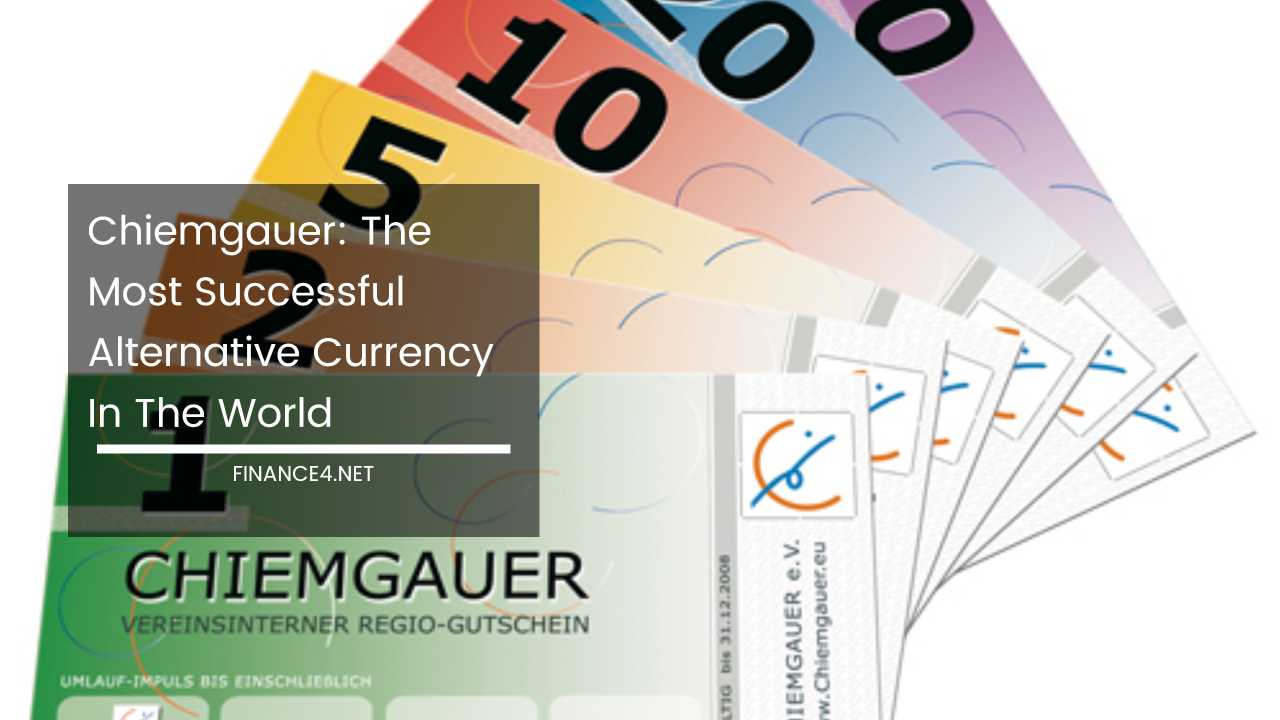Chiemgauer: The Most Successful Alternative Currency in the World

The Chiemgauer: A Regional Currency Revolutionizing Bavaria’s Economy
Nestled amidst the rolling hills and charming villages of Bavaria’s Rosenheim-Traunstein region lies a testament to human ingenuity – the Chiemgauer.
Often hailed as the world’s most successful alternative currency, the Chiemgauer’s story is not one born from the halls of renowned economists, but rather from the enterprising spirit of a group of teenagers and their passionate teacher.
In 2003, Christian Gelleri, a visionary economics teacher, sought to break away from traditional methods of financial education. He embarked on a unique experiment, involving his 16-year-old students in the creation and implementation of a local currency – the Chiemgauer.
This wasn’t just a classroom exercise; it was a hands-on exploration of economic principles, with the students actively designing the banknotes, managing accounts, and taking ownership of the entire process. It instilled in them a sense of community responsibility and financial literacy in a way that textbooks simply couldn’t.
The Chiemgauer, named after the picturesque Chiemgau region, was designed to seamlessly integrate into the local ecosystem. Each note mirrored the value of its euro counterpart, ranging from one to fifty euros. However, a crucial twist set it apart – a three-month expiration date.
This ingenious feature served a dual purpose. Firstly, it ensured swift circulation, preventing the currency from being stashed away like traditional savings. Secondly, it guaranteed a constant flow of Chiemgauer back into local businesses, keeping the lifeblood of the regional economy pumping.
The core philosophy behind the Chiemgauer lies in the concept of economic localization. By encouraging residents to spend their Chiemgauer locally, it bypasses large corporations and injects financial lifeblood into the veins of small and medium-sized businesses.
This fosters a sense of community and self-sufficiency, ensuring that profits stay within the region and contribute to its overall prosperity. Embracing convenience, the Chiemgauer system seamlessly integrates with modern payment methods. Local banks and businesses readily accept Chiemgauer debit cards, and some credit unions even recognize it as legal tender.
The initial years, however, were marked with cautious optimism. Launching a new currency in a conservative and affluent region like Rosenheim-Traunstein proved challenging.
The first year witnessed a modest 130 participants, generating a turnover of €75,000. Yet, beneath the surface, a quiet revolution was brewing. People were beginning to recognize the potential of the Chiemgauer.
Fast forward to today, and the Chiemgauer boasts a remarkable track record. Over 600 businesses and 3,300 individuals have actively embraced the Chiemgauer, contributing to a staggering €550,000 pumped into local charities. But what truly sets the Chiemgauer apart is its velocity.
Estimates suggest that the Chiemgauer circulates two and a half times faster than the euro within the local economy. This rapid circulation fuels a vibrant exchange of goods and services, keeping the economic engine of the region humming.
Participation in the Chiemgauer system comes with a nominal cost. Businesses pay a one-time registration fee and a monthly maintenance charge to offset administrative expenses. Additionally, a 5% fee is levied when exchanging Chiemgauer back into euros.
However, this fee structure isn’t purely profit-driven. A thoughtful 40% is allocated towards maintaining the smooth operation of the Chiemgauer system, while the remaining 60% finds its way to local non-profit organizations. This ingenious mechanism creates a virtuous cycle – economic growth fueled by the Chiemgauer translates into social good through community investment.
Despite its impressive growth, the Chiemgauer still represents a small but significant fraction of the region’s total economic output.
However, Christian Gelleri, the mastermind behind the Chiemgauer, remains an unwavering optimist. He envisions a future where the Chiemgauer accounts for a substantial portion of the regional GDP, solidifying its position as the backbone of the local economy.
The Chiemgauer’s impact transcends the borders of Rosenheim-Traunstein. It has become a beacon of inspiration for proponents of alternative currencies across Germany.
With 28 such complementary currencies already operational and a staggering 37 under development, a quiet revolution is simmering beneath the surface of the German economic landscape. Some see this as a response to the perceived shortcomings of the Eurozone.
A growing number of Germans are questioning the efficacy of the single currency, particularly in the wake of past economic struggles.
Gelleri, however, doesn’t view the Chiemgauer as a competitor to the euro. He envisions a complementary system, where both currencies coexist and fulfill distinct roles.
The euro facilitates larger transactions and international trade, while the Chiemgauer strengthens the local economic fabric by fostering a sense of community ownership and resilience.
This two-tiered system offers a potential solution for a future-proof economy, balancing the need for global connectivity with the importance of nurturing local businesses and social well-being.
The Chiemgauer’s success story extends beyond economic benefits. It has fostered a sense of community pride and identity within Rosenheim-Traunstein.
Local residents actively participate in a system they helped create, fostering a sense of ownership and responsibility for their economic well-being. This collaborative spirit strengthens social bonds and builds a more resilient community, one that is less susceptible to the fluctuations of the global market.
However, the Chiemgauer model isn’t without its challenges. One concern lies in potential administrative burdens. Implementing and maintaining a separate currency requires resources and expertise. Scaling the model to much larger regions might prove impractical.
Additionally, ensuring widespread adoption across diverse demographics within a community can be a hurdle. Convincing everyone, from tech-savvy millennials to cash-wary seniors, to embrace a new currency requires ongoing education and outreach efforts.
Another potential challenge lies in potential integration with existing financial regulations. While the Chiemgauer currently operates smoothly within the confines of Rosenheim-Traunstein, integrating it with larger financial systems could pose regulatory hurdles.
Finding the right balance between fostering a vibrant local economy and adhering to national financial regulations will be crucial for the Chiemgauer’s long-term success.
Despite these challenges, the Chiemgauer serves as a powerful case study for the potential of local currencies. It demonstrates that well-designed and community-driven initiatives can create a more sustainable and equitable economic landscape.
The model offers valuable insights for policymakers and economic developers around the world, particularly those seeking to revitalize regional economies and empower local communities.
Looking ahead, the future of the Chiemgauer appears bright. Continued innovation and adaptation will be key to its ongoing success. Exploring partnerships with online marketplaces and integrating mobile payment solutions could further streamline transactions and attract a wider user base.
Additionally, fostering collaboration with other regional currencies in Germany and beyond could create a network of complementary economic ecosystems, strengthening local economies on a national and potentially even international scale.
The Chiemgauer’s story is a testament to the power of human ingenuity and community spirit. It serves as a beacon of hope, demonstrating that even a small group of passionate individuals can create a ripple effect that transforms a local economy.
As the world grapples with complex economic challenges, the Chiemgauer offers a glimpse into a future where local innovation paves the way for a more sustainable and equitable economic landscape.



